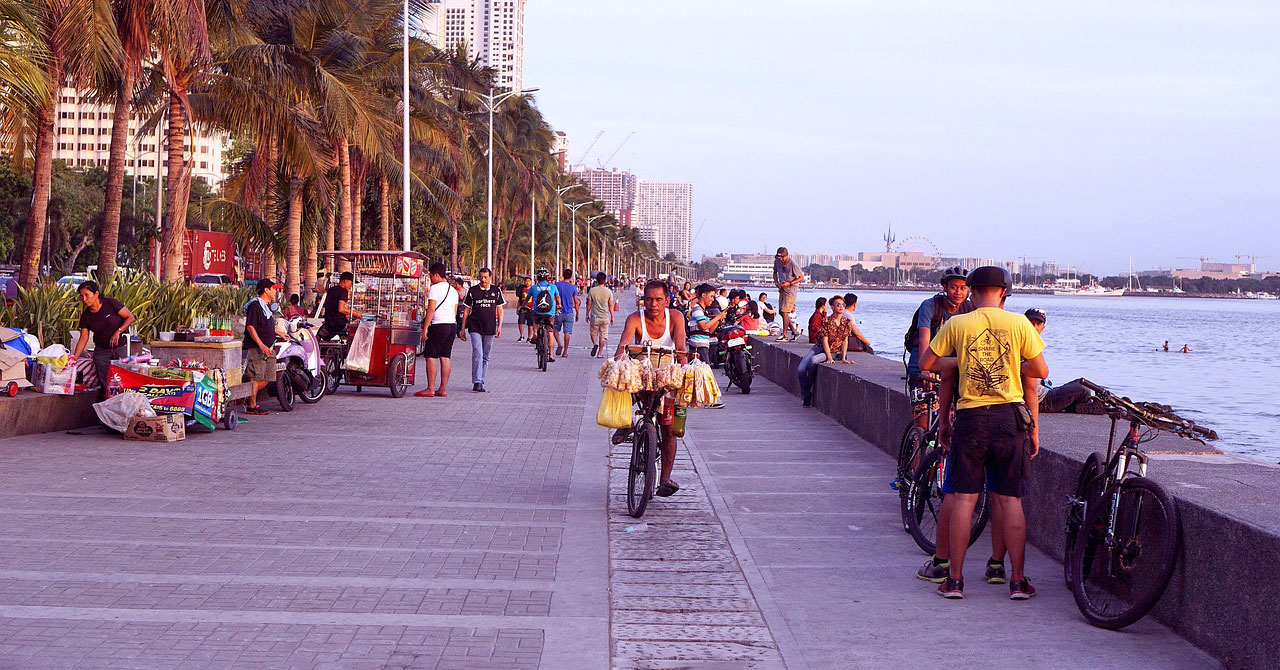Newsflash. A single order of large fries at McDonald’s would now cost you P98 pesos. At least near where I live. That’s almost P100 for fries. Interestingly, that makes a 1-piece chicken meal more “sulit” since that comes with rice and fries. But considering how the chicken pieces have also shrunk, you’d wonder if there’s anything that’s sulit at all these days.
Spam has been my personal barometer of how badly prices have gone up. A can at the regular supermarket costs P240 compared to just P130 in 2018. That’s nearly double in just five years. And don’t get me started with the recent onion crisis that made a kilo of red onions more expensive than a kilo of red meat.
All of this means that you have to pay attention to how you spend your money. Unlike our filthy rich counterparts, we middle class folks don’t have hundreds of millions of pesos stowed away to weather the spike in the price of French fries. Our pursuit of happiness surely is made more difficult if we can’t even enjoy decent-sized Chickenjoy.
What is Inflation?
If you’ve forgotten your basic economic concepts from your social science class, inflation is the general increase in the prices of products and services over time. It’s measured using a the percentage change in the prices over a set period. Our statistical authority uses the consumer price index (CPI) as basis for computing the inflation rate. The CPI basically tracks the prices of the common goods Philippine households purchase.

What Causes Inflation?
In our case, our high inflation rate has been attributed to a multitude of factors.
- Weak Peso – A weak Peso means we have to spend more to buy imported goods and since we import a lot of commodities, we end up with high market prices.
- Excise tax – The TRAIN law added excise tax on fuel. Since fuel is crucial to moving goods around, higher fuel prices also affect the prices of goods.
- Oil prices – Speaking of fuel, oil prices are up globally. The war in Ukraine didn’t help
- Supply chain crunch – The supply chain crunch caused by the pandemic (where the movement of raw materials and manufactured goods was severely slowed down) has yet to ease. High demand and low supply typically pushes prices up.
On a side note, inflation can also be caused by an increase in money supply. To be fair, the Bangko Sentral has been cautious with just printing more money so as not to contribute to inflation. Those fragile polymer notes, however, are a different matter.
What is the Current Inflation Rate in Philippines?
The Philippine inflation rate is estimated hit 9.3% in February 2023. Food, restaurant services, and utilities all posted higher year-on-year figures.
Is the Philippines High Inflation?
Well, currently once could say yes. Our country suffers from relatively high inflation especially when comparing to previous years. This is why we tend to wince when we look at prices these days.
If you compare our inflation rate to other countries that top the charts, you might think that it’s still quite low. Venezuela’s inflation rate at the start of 2022 was at over 1,100%. However, one must note that Venezuela has been under extreme crisis and political upheaval. So, it’s not fair to compare theirs to ours and say that ours is low.
How Does Inflation Rate Affect Filipinos?
Inflation can affect the middle class in several ways:
- Increased cost of living – High inflation means higher cost of living. The basic expenses like food, utilities, and education will go up, meaning it’s tougher to make ends meet especially if your income remains the same.
- Reduced purchasing power – Your P1,000 last year buys fewer things today. If you’re eyeing that brand new flagship phone, know that you’d have to work more to be able to afford it.
- Increased cost of borrowing – Inflation also leads higher interest rates meaning the cost of borrowing money also goes up. So, if you plan to take out a home or car loan, the rates are pretty expensive. Credit card interest rates and fees have also gone up, so be mindful of how you swipe.
- Impact on savings and investments – Inflation can have an impact on investments, including savings. So, in case you let your money “sleep” in your savings account the past year, know that it’s worth a lot less, especially with just the 0.0625% interest rate they give you. This should make senior citizens nervous since their pensions and retirement funds since higher prices means they won’t be able to sustain the same lifestyle.
Ideally, we’d really like to have low and stable inflation rates. That keeps prices manageable and makes making other financial moves more predictable.
Of course, government has a lot of sway on how inflation can be controlled or at least how the effects are mitigated. But hey, we have the government that we have, right?

How Do You Deal with a Inflation Rate?
Since we, the burgis, have basically been left to fend for ourselves, we have to actively do something to mitigate the effects of the rising Philippine inflation rate.
Financial wisdom has it that, to maximize your finances, you have to either have to cut back on your costs or increase your income. So let’s explore some moves that would do just that.
Cutting Costs
- Buy in bulk – Buying in bulk means you typically get items cheaper. You can very well stock up on goods that don’t have or long expiration dates like tissue paper, canned goods, toiletries, diapers, and cleaning supplies. Membership stores like Landers and S&R typically offer good deals on bulk items, offsetting even the membership fees that they charge if you buy enough.
- Buy smart – Look for better bang-per-buck alternatives for common purchases. For instance, I’ve personally learned to live eating Tulip Jamonilla over Spam.
- Forgo unnecessary purchases and expenses – If you don’t have to spend, don’t. Skip your daily Starbucks or your routine staycations.
- Do your own chores – This can be a touchy subject. On one hand, you’re giving someone a livelihood. On the other, they’re a major expense. In Metro Manila, stay-in kasambahay wages are commonly pegged at around P7,000 to 8,000. The total cost is even higher if you factor in the cost of their room and board. Considering inflation, it’s only wise to weigh the benefits against the costs.
- Grow your own food – Being a plantito or plantita has become a fad over the past years now. Planting some edible plants and fruit-bearing plants does make sense. Even a meager harvest can save you from buying an ingredient or two on occasion. For instance, having a basil plant can save you from buying a small bottle of dried basil (priced at P60) at the grocery store. These savings can add up.
Increasing Income
- Get promoted or get a raise – If you’re currently employed, one way to increase your income is to perform well in your job. You can get promoted and get a substantial increase in compensation, get a raise, or get a bonus for your hard work. Alternatively, you can find higher paying opportunities.
- Find a side hustle – You can also increase your income through side hustles. There’s a bunch of freelance work you can do on your free time.
- Take risks – It might seem counter intuitive but another way to increase your income is through business ventures or investments. It might seem counterintuitive considering the economy but there can be good opportunities available even in a down economy.

Tiis-tiis
Considering everything, we, the burgis, should face reality and brace ourselves for more of the same. It seems that our situation won’t be changing for the better given the environment we’re in. Though we could surely hope for some real positive developments.
Even if it pains me to say it, we’d have to just keep building our resilience and just power forward. Hopefully, we’ll be able to enjoy our fries and Chickenjoy without wincing at the prices sometime in the future.

